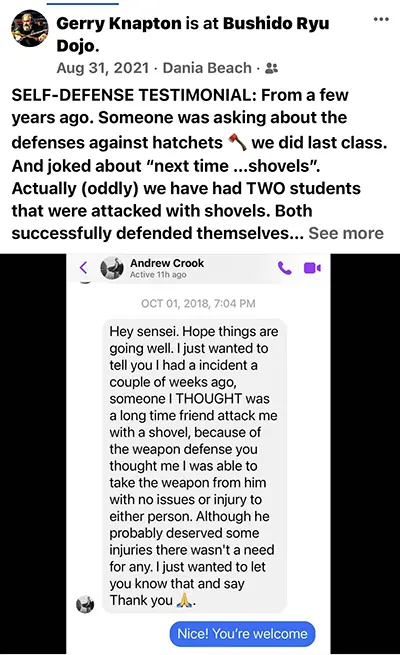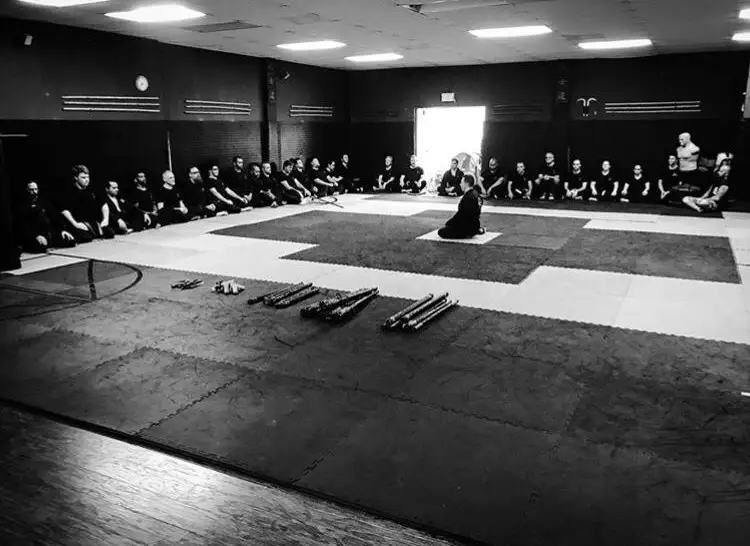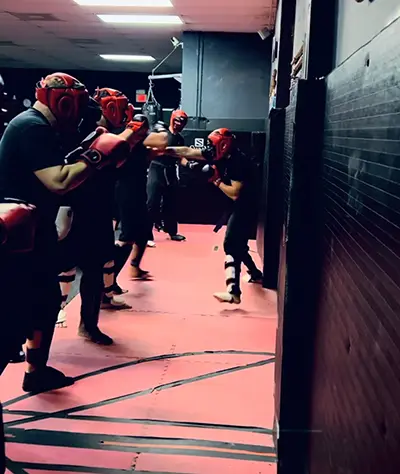Krav Maga & Self Defense Class in Dania Beach, FL
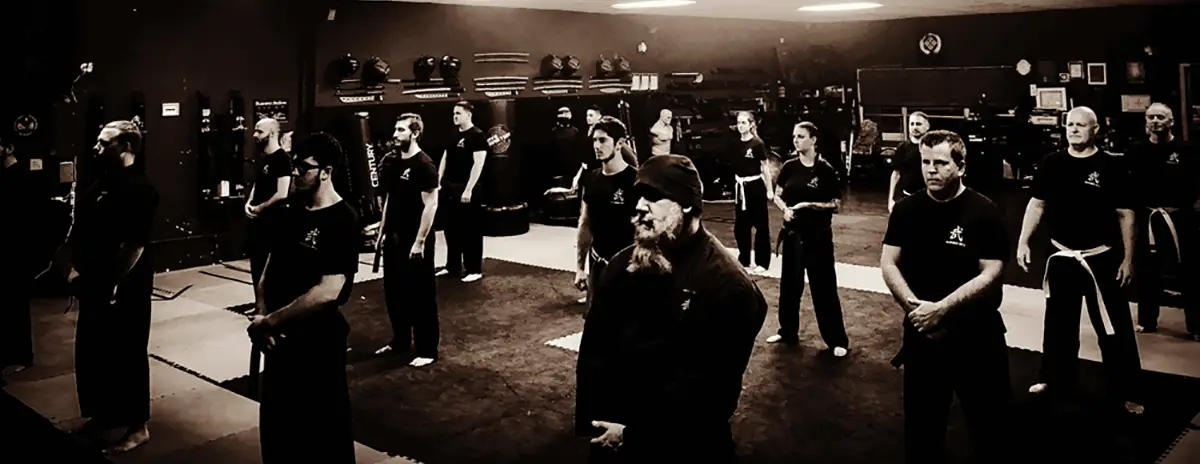
Krav Maga will teach you to actually be able to defend yourself against a violent street attack.
Krav Maga for self defense was developed to be a quick way to teach regular people to be able to defend themselves.
Can you actually defend yourself?

Most people I meet these days (esp under 40 years old) have never been in a fight. Or at worst a non-serious fistfight in school, where no one was really trying to seriously hurt you.
It’s great if you made it this far in life and have not really needed to defend yourself. I hope that continues to be the case for you.
But so far you’ve also been very lucky. And you likely know that, which is what brought you to this page.
Do you know how to block a punch?
That’s pretty simple to do actually. Most people don’t know how.
Krav Maga Self Defense skill gives you freedom from fear & peace of mind.
One of the most important parts of having self defense skill is peace of mind and being free from fear. If you (really) know how to defend yourself you don’t have to stress as much about possible self defense situations.
There is a mental cost to living in a violent world. Every time you see some dangerous or angry person you have to be concerned.
Or all the crazy stuff you see in the news every day. If that was you in the news story would you have been ok?
In the news I see people getting randomly attacked, sucker punched, ganged up on, people with knives. It’s just crazy out there these days.
Are you confident that you could effectively defend against any of that?
Over of my students who ended up having to defend themselves have been totally successful. That’s why we call the skills we teach “proven effective” because they have been.
None of those students were champion martial artists. Most of them had less than 6 months of training.
If you walked out to your car tonight and guy popped up and put a gun in your face (and didn’t just want to rob you) what would you do? If you don’t know exactly what your best options to save your own life are you should come and learn.

If you were out doing errands tonight and 2 guys came at you and attacked you, what would you do?
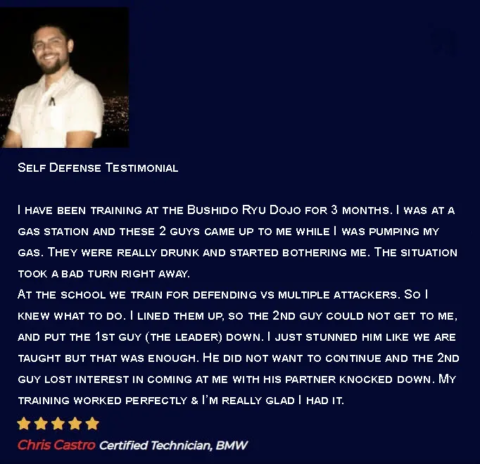
Most people don’t have any real answers to how to handle real self defense scenarios. If they end up in a bad spot they just do whatever they can.
Many times they basically freeze. Are you comfortable walking around like that?
The good news is getting this self defense area of your life handled is fairly easy.
If you would like us to TEXT you some training videos, additional info & what class times are available for you to come & train with us then send your number
Also training in Krav Maga for self defense is a fun experience.
Getting to the basic skill level you need takes a few months and then you will feel more comfortable and confident knowing you can defend yourself and your family.
You’ll learn skills that will work right away in your first class.
This isn’t like having to go do something that you might find difficult & unpleasant: like training to run marathons or lifting weights for hours to be a bodybuilder.
Krav Maga & Martial Arts training at our school is a lot of fun.
Learning the techniques is interesting & We calibrate what you’re learning based on where you are at (your fitness, your skill level, your comfort level).
You get to be part of a great group of people –who will all help you to learn your skills and feel comfortable.
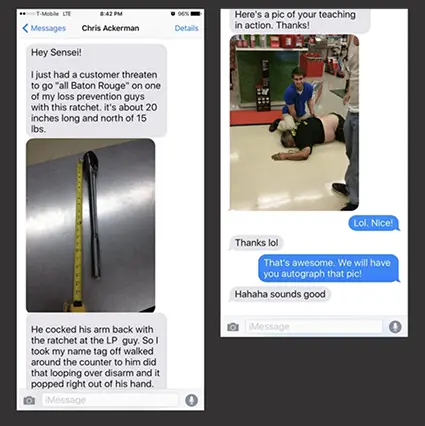
I am the head Sensei here at the school. I’ve been training in Krav Maga, Karate and other functional martial arts since the late 1970s.
As a kid I wanted to learn to be able to defend myself. My family moved a few times so I was going to new schools and dealing with the latest bully.
So I found an instructor and started training in a Krav Maga & Karate.
I quickly learned how to fight and very soon I felt more comfortable & confident that I could defend myself.
Even though I had not trained that long, on the occasions when I had defend myself my new skills worked and I was successful.
Real self defense skills fighting skills are simple and work right away. That’s a clue that what you are learning is the real thing.
All that movie martial arts stuff you’ve been seeing your whole life is fun and entertaining. Serious martial artists like it too but its NOT real fighting technique. At all.
Mostly it’s complete BS. We don’t do spins, flips or super intricate 15 part trapping sequences like Jet Li. LOL.
If you don’t know how to fight you should learn.
I’m always a bit amazed that the people are comfortable walking around not knowing how to defend yourselves or their family.
Doesn’t it worry you? If things go bad and some violent criminal or angry guy attacks you are very likely to get hurt.
Call or Text the Dojo
954.249.4998
Most martial arts schools are focused on teaching children the “sports” version of a specific martial art, such as Karate or Taekwondo.
While this might be great exercise for kids, and teach them respect and coordination, it provides little value for adults who find themselves in real-life street fighting scenarios.
Something similar might be said about today’s “MMA” sport fighting obsession.
A large, professionally-trained MMA fighter could win in most common one on one barehanded street fight scenarios. Especially if someone basically tries to attack them like its an MMA match.
And even for long time MMA fighters and other sport martial artists (and boxers, wrestlers etc.), real street defense is completely different from what happens in rings and at tournaments.
If you have to defend your family in a parking on concrete rather than the professional ring with mats on the floor you are used to it changes things.
What if there are multiple attackers? What if you are sitting in your car?
What do you do if the guy pulls a gun? We have had 3 students have attackers pull guns on them at close range, all 3 of them were totally successful defending themselves.
If you don’t know what you should do facing a gun or other actual street defense situations then you should come and learn.

We teach practical martial arts for self defense.
There’s an original area of martial arts training outside martial sports and children’s after school sports Karate.
In the world of martial artists we call these original street functional martial arts the “war arts”.
These are the original martial arts that all the rest of the martial sports you see are descended from.
Traditionally the war arts are kept secret and only taught to family members.
Krav Maga is a modern derivative of the war arts that has classes and training available.
Krav Maga have become well known and popular among adults who want to be able to defend themselves because it is clearly different and more functional than the sport Karate classes you see the kids doing.
Krav Maga being more commonly known is a recent trend in the United States.
To those of us with many years of experience in the roots of Krav Maga — who have trained for decades in old-school Karate and Jujitsu and weapons arts, it’s a bit funny that people are just recently discovering the war arts like it’s a new thing -when they have been around for a thousand years.
These arts are not a new thing. They are a very old thing.
Krav Maga is descended from these original Japanese martial arts (Karate & Jujitsu), along with a few techniques borrowed from Western style boxing and wrestling, along with weapons defenses.
But as the name Krav Maga is getting more well known now and looked for when people want real, functional self defense without trying to master all the fancy Karate moves you see in movies.
This is why for the last few decades we have highlighted our Krav Maga classes, with the important note that our dojo also teaches a lot more beyond what other Krav Maga schools are generally teaching.
Krav Maga & Martial Arts Course Schedule
At our Dojo the advanced students all help out and mentor the newer students with their martial arts skills.
The Dojo is a warm, inclusive environment, where you will feel part of the group right away.
The spirit of proper martial arts training is martial artists treat each other with mutual respect & courtesy, help one another & learn from one another. Its the Dojo brotherhood.
Our Dojo teaches classes in small groups, and also works with students one-on-one in private lessons, to ensure accelerated individual progress.
| Daytime | Evening | Late Evening | |
|---|---|---|---|
| Monday | 12:00pm | 6:30pm | 7:30-09:00pm |
| Tuesday | 12:00pm | 6:30pm | 7:30-09:00pm |
| Wednesday | 12:00pm | 6:30pm | 7:30-09:00pm |
| Thursday | 12:00pm | 6:30pm | 7:30-09:00pm |
| Friday | (none) | 6:30pm | 7:30-09:00pm |
| Saturday | 12:00pm | (none) | (none) |
| Sunday | (none) | (none) | (none) |
The purpose of Krav Maga is to quickly give people functional self defense fighting skills that can handle the types of attacks that happen in real life.
This is why our course maintains an ongoing rolling schedule, because the goal is a combination of physical fitness, personal growth, mental training, confidence building, and developing self defense skill -so that you’re prepared to defend against the whole variety of possible self defense situations.
Brief History of Krav Maga Self-Defense
Krav Maga is a combination of older (War Arts) versions of Karate & Jujitsu skills (along with weapons defenses).
Krav Maga is best known as the hand to hand fighting style used by the Israeli military (IDF) as their self-defense method.
Krav Maga was developed by Imi Lichtenfeld based on skills taught to him by his father Samuel.
Samuel had been an acrobat in the circus in his early life and had been exposed and trained in jujitsu, karate and weapons arts as well as boxing and wrestling in his travels.
When he returned home he opened a school (the ‘Hercules gym”) where his son and others trained with him.
Krav Maga is an excellent and very functional martial arts system. It is very simple and is used as a simple hand to hand fighting system and is generally used to teach military personnel and civilians very quickly.
These days Krav Maga has developed a reputation for being a martial art that suits people who just want actual self defense skills and are not interested in trying to be a Chuck Norris style fighter or competing in martial sports (MMA etc).
Because of Krav Maga’s simple, not flashy martial skills it looks quite a bit different from the martial sports you are used to seeing in movies.
It looks more like the original versions of Karate, Jujitsu and other “Bujutsu” (war arts).
These original arts are traditionally only taught to the instructors family members and trusted students. In the same way as the military keeps the fighting technologies they use secret, martial artists have historically kept their actual fighting techniques secret.
Proven Self Defense
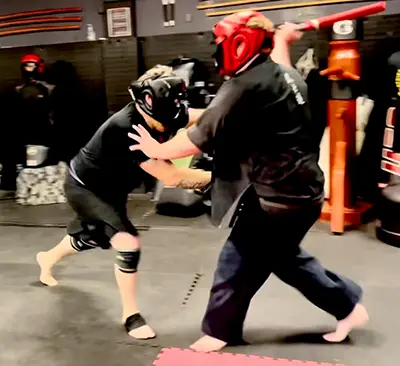
What is Self Defense?
Self defense is being able to effectively defend yourself against the type of real world attacks that you might face.
Many people think of “self defense” as a simple subcategory of the type of sport martial arts they are used to seeing in movies. Generally when people think of self defense they are thinking of those mini classes people teach.
When WE think of self defense we are talking about learning the fighting skill to handle
Sport martial arts (especially when you are doing it for a show or demo) involves very complicated and acrobatic moves. Spinning hook kicks, super flexibility and Jackie Chan style acrobatics.
The reality is those sport martial arts are all very new. The most common sport Karate, Taekwondo, was founded in 1954.
So when someone finally decides they need to need to get the self defense area of their life handled, they are not thinking of trying to become a Black Belt. They just want to know they have the skills to protect themselves if they were attacked.
And that leads them to simple functional martial arts like Krav Maga.
Krav Maga is very similar to the original versions of Karate & Jujitsu it is derived from. That’s why it looks different from the sport Karate or fancier Kung Fu you see in movies.
Real martial arts are very SIMPLE. You can learn many of the basic skills in hours (Not years). If you have to actually do this in a real situation it can NOT be complicated.
If you have to defend yourself it should take less that 2 seconds. None of the moves require you to be able to kick head high or do splits or backflips. (that’s fine for movies and demos but its NOT what we actually do)
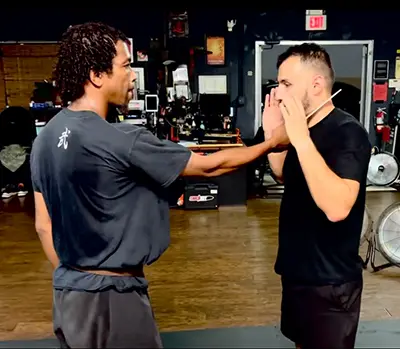
What Skills does Krav Maga for use for Self Defense?
To be able to defend yourself effectively you need to be able to defend vs the types of attacks that really happen to people. To be effective at self defense you need to be prepared to use and defend against some main areas of skill:
- Kicks Range (Karate/Krav Maga kicks)
- Punch Range (all the various punches)
- Infighting Range (elbow strikes, knee strikes, Kung Fu trapping skills etc)
- Grappling Range (Avoid going to the ground but you need the grappling skills)
- Joint locks, chokes, throws & takedowns
- Weapons skill (use & defend vs knifes & sticks)
- Pistol & rifle defenses for close range
- Multiple attacker fighting
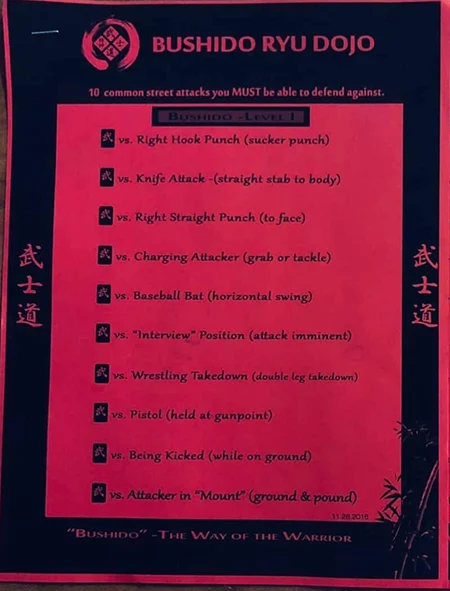
Self Defense Skill
